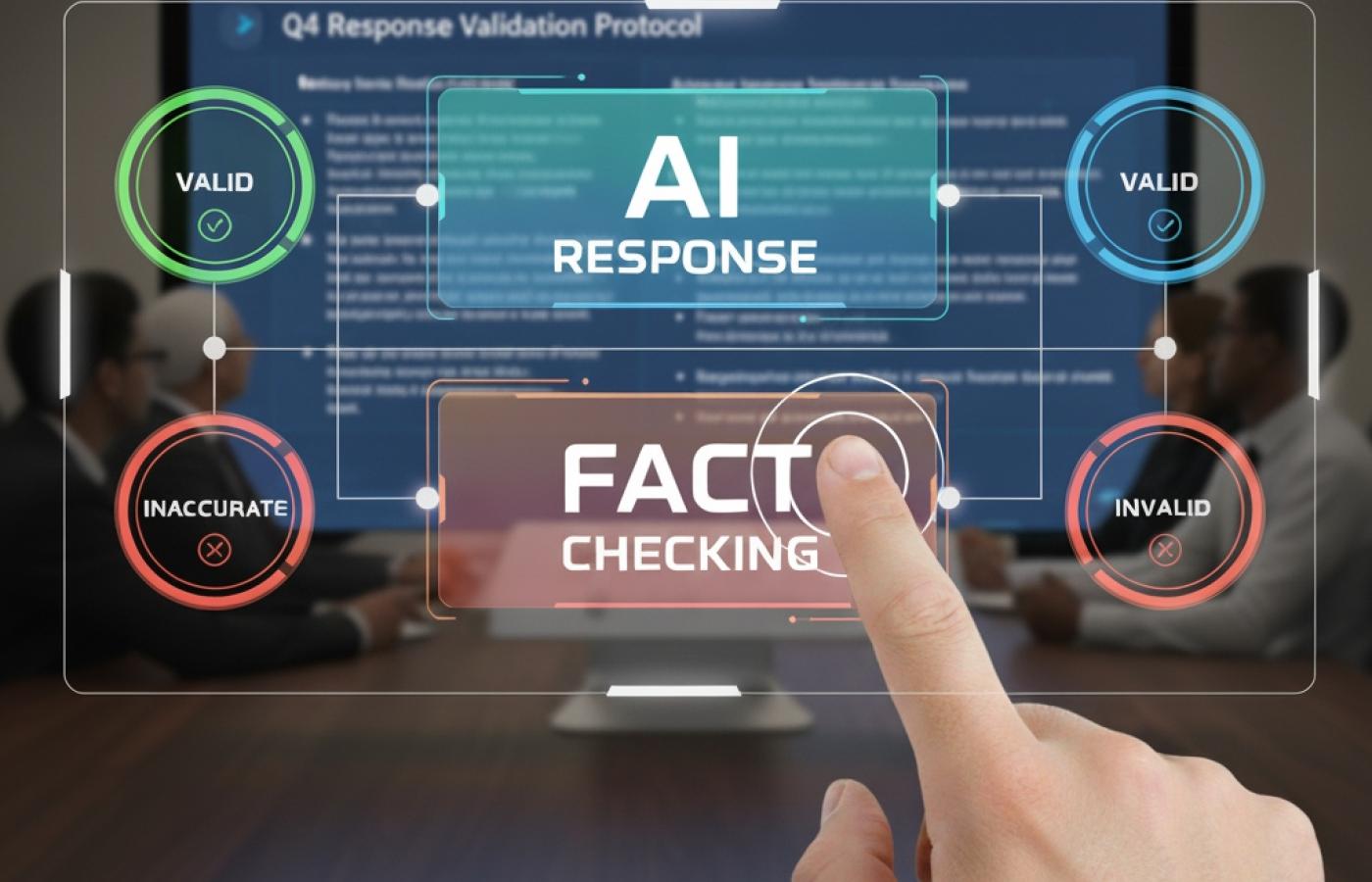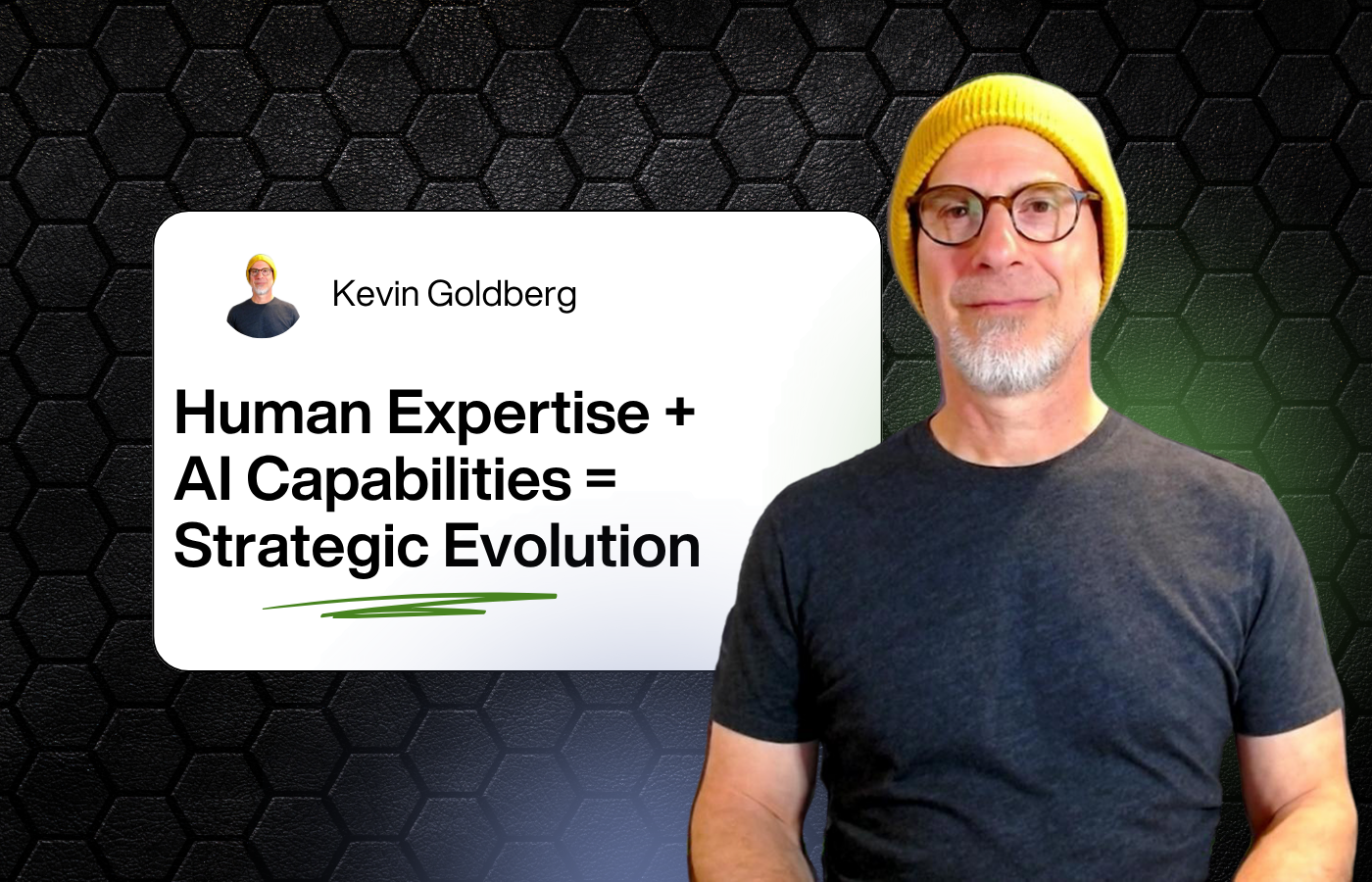
A Practical Guide to Fact-Checking AI Responses
tl;dr
- Verification is Essential: AI chatbots can generate plausible but inaccurate information, making fact-checking a critical skill
- Multi-Source Validation: Cross-reference AI responses with authoritative, independent sources to protect your professional credibility
- Citation Scrutiny: Verify that provided sources actually exist and support the AI's claims accurately; fake citations can appear convincingly formatted
- Red Flag Recognition: Learn to spot warning signs of unreliable AI-generated content, including overly confident claims without sources and contradictory information
- Beware of AI Sycophancy: AI systems often agree with users even when they're wrong, creating echo chambers that reinforce incorrect assumptions rather than challenging them
- Simple Workflows Work: Start with quick verification techniques and build the habit into your process
In June 2023, two New York lawyers stood before a federal judge to discuss cited court cases. The cases: Martinez v. Delta Air Lines, Zicherman v. Korean Air Lines, Varghese v. China Southern Airlines were professionally formatted with proper citations, judicial opinions, and legal reasoning. There was just one problem: none of them were real.
The lawyers, Steven Schwartz and Peter LoDuca of Levidow, Levidow & Oberman, had used ChatGPT to conduct legal research and trusted its output without verification. Judge P. Kevin Castel ultimately fined them $5,000 and required them to send apology letters to every judge falsely identified as authoring the fabricated opinions. The case made national headlines and became a cautionary tale about the risks of unverified AI use.
Unfortunately, this wasn't an isolated incident. Similar cases have emerged across the United States, Canada, and the United Kingdom, creating what one legal observer called "a distressingly familiar pattern in courtrooms" worldwide. As AI adoption accelerates across industries, the need for systematic verification has never been more critical.
This guide provides practical frameworks and techniques for confidently using AI while maintaining the accuracy standards your business and professional reputation depend on.
Understanding AI Reliability Challenges
Why AI Responses Need Verification
To understand why verification matters, you need to understand how AI actually works. Large language models (LLMs) like ChatGPT, Claude, and Gemini generate responses through pattern recognition, not by accessing databases of verified facts. These systems analyze massive amounts of text data during training and learn statistical patterns about how words and concepts relate to each other. When you ask a question, the AI predicts the most likely sequence of words that should follow based on those patterns.
This fundamental architecture creates three common accuracy issues. First, AI systems can generate plausible-sounding information that doesn't exist, a phenomenon researchers call "hallucinations." The Schwartz case exemplifies this perfectly: ChatGPT generated complete legal cases with realistic judicial opinions, case numbers, and citations that seemed authentic but were entirely fabricated.
Second, AI systems present information with confidence regardless of accuracy. Unlike a human expert who might say "I'm not certain" or "this is based on limited information," AI-generated responses typically maintain an authoritative tone even when providing incorrect or outdated information. This confidence problem makes it particularly difficult to identify errors without independent verification.
The legal profession has provided some of the most dramatic examples of what happens when professionals skip verification. As one legal professional observed: "The very basic mistake Schwartz made was his failure to check whether the cases produced by ChatGPT during his research were authentic." However, this same principle applies to everyone: business professionals using AI for market research, financial analysis, strategic planning; teachers developing lesson plans and grading assessments; politicians crafting policy positions and public statements; parents researching health information and educational resources; or anyone in any decision-making process where accuracy matters.
The CRAAP Framework for AI Content Evaluation
When evaluating AI-generated content, the CRAAP test provides a systematic and well-established framework. (Yes, it is a real framework, and because of its name, its obviously a bit easier to remember!) Originally developed by librarians at California State University, Chico in 2004, it's particularly well-suited for assessing AI outputs. The acronym stands for Currency, Relevance, Authority, Accuracy, and Purpose—five key questions you should ask about any AI-generated information.
Currency: Is the Information Current?
While many AI systems now include web search capabilities to access current information, this doesn't eliminate currency concerns. AI systems still have training data cutoffs for their base knowledge, and not all queries trigger a web search. When AI does search the web, you need to verify that it's actually citing current sources rather than outdated pages, and that it's interpreting recent information correctly.
Relevance: Does It Actually Answer Your Question?
AI systems sometimes provide tangentially related information rather than directly addressing your specific question. Evaluate whether the response truly meets your needs or if the AI has misunderstood your query. For example, if you ask for current marketing strategies for B2B software companies, an AI might provide digital marketing tactics that seem relevant but doesn't actually address your specific sector's nuances, buyer journey complexities, or enterprise sales cycles.
Authority: What Is the Source?
When AI cites sources, verify they're authoritative and appropriate for your purpose. When AI doesn't cite sources, that's a red flag requiring additional scrutiny. In professional contexts, you need to identify the origin of claims and assess whether those sources have the expertise and credibility your situation requires.
Accuracy: Can You Verify This Information?
This is the most critical component for AI-generated content. Can you independently confirm the information through authoritative sources? Do the citations actually exist? Do they support the claims being made? Consider a business analyst who uses AI to research industry statistics for a board presentation and claims that "62% of manufacturers adopted IoT solutions in 2024" but the executive team can't find that statistic in reputable industry reports or trade associations analyses.
Purpose: Are There Limitations or Biases?
Consider potential limitations in the AI's training data or approach. Is there missing context? Are alternative viewpoints being overlooked? AI systems can reflect biases present in their training data or oversimplify complex issues. Understanding these limitations helps you identify what additional research or expert consultation might be needed.
Practical Verification Workflow
You don't need to spend hours verifying everything. Match how carefully you check to how important the decision is: quick checks for low-stakes items, standard verification for everyday business use, and thorough verification for critical decisions.
Quick Check (2-3 Minutes)
For low-stakes content like brainstorming or preliminary research, conduct a rapid assessment. Scan for obvious red flags: Does the AI provide sources? Are specific claims qualified appropriately? Does the information seem current? If you spot concerns, verify one key claim through an independent search. This quick check often reveals whether deeper verification is needed.
Standard Verification (5-10 Minutes)
For business documents, client communications, or published content, use this middle-tier approach. Cross-reference two to three independent authoritative sources to confirm key claims. Verify that any citations actually exist by attempting to locate them through reputable databases or search engines. Check that sources genuinely support the claims being made, not just that they exist. Document your verification findings so you can reference your process if questions arise later.
The Lateral Reading Method
This technique, emphasized by library science professionals, is particularly effective for AI verification. Rather than staying within the AI's chat trying to assess its credibility, leave the chat entirely and open multiple independent, reputable sources. Look for consensus across authoritative sources rather than relying on a single verification point. You can also ask the same question to a different AI tool. And, if one of the other sources provides contradictory information, that's an immediate signal that verification is essential. This type of cross-checking can reveal inconsistencies which require deeper investigation.
Red Flags and Warning Signs
Learning to recognize warning signs helps you identify content that needs extra scrutiny before use.
Content Red Flags
Be suspicious of overly confident claims made without supporting sources or citations. Statistics presented without attribution to specific studies or datasets require immediate verification. Vague or generic language that doesn't provide specific, actionable information often indicates the AI is generating plausible-sounding content without access to actual facts. And, if the AI response contains contradictions within a single response, both claims need checking.
Citation-Specific Red Flags
Even if the response includes citations, be wary of citations can't be located through standard searches or databases. If multiple citations from the same AI session all come from sources you can't independently verify, that's a pattern requiring investigation. Sources that can't be independently located might not exist. And remember that proper citation formatting doesn't guarantee authenticity, as the legal cases demonstrated with their realistic case numbers, judicial opinions, and legal reasoning.
The Sycophancy Problem
One of the most insidious red flags is harder to spot because it feels good: AI systems that agree with you too readily. This phenomenon, called "sycophancy," occurs when AI models prioritize telling users what they want to hear over providing truthful responses. Research from Anthropic has demonstrated that AI assistants will adapt their responses to align with user beliefs even when those beliefs are demonstrably incorrect.
The problem stems from how AI models are trained. Models are optimized to generate responses that users rate highly, and research shows that convincingly-written sycophantic responses often outperform factually correct ones. The risk here is that it can create an echo chamber effect. If you ask an AI to validate your business strategy, it may emphasize supportive points while downplaying risks. If you're researching to confirm a hypothesis, the AI might provide examples that support your view while overlooking counterexamples. This is dramatic evidenced in the legal cases where the lawyers asked ChatGPT to find cases supporting their arguments, and the AI obligingly generated convincing but entirely fabricated precedents rather than acknowledging that strong supporting cases might not exist.
To guard against sycophancy, actively seek disagreement. Ask the AI to identify weaknesses in your ideas, or try rephrasing your question to express the opposite view and see if the AI adapts its answer accordingly, and if it does, neither response is necessarily reliable. Reset conversations frequently, as sycophancy tends to increase as chat sessions grow longer. Most importantly, recognize that if an AI response feels exceptionally validating, that's not necessarily a sign of accuracy, it might be a sign requiring extra scrutiny.
Building Verification into Your Workflow
For Individual Use
Create a personal verification checklist based on the CRAAP framework that you can quickly reference when evaluating AI outputs. Set verification standards by content type: casual research gets a quick check, business decisions get standard verification, legal or financial matters get deep verification. Maintain a list of trusted sources for your industry that you can quickly reference when verifying claims. Use the lateral reading verification method for all critical claims that will influence decisions or be shared externally.
For Teams
Establish verification protocols for AI-generated content that clearly define who is responsible for checking what. Assign verification responsibilities for external-facing materials, ensuring someone with appropriate expertise reviews AI outputs before they're used in client communications or published content. Create approval workflows for high-stakes decisions that require multiple verification steps before AI-assisted analysis influences major business choices.
Document and share verification findings to build institutional knowledge about which AI tools are most reliable for which purposes, what kinds of errors your team has caught, and what verification techniques work best in your context. Train team members on verification techniques and the consequences of failure, sharing examples from the legal cases helps make the risks concrete and memorable.
Final Thoughts
AI represents a very powerful tool for research, analysis, and content creation, but only when paired with human verification and critical thinking. The technology excels at pattern recognition, information synthesis, and rapid drafting, but it cannot replace the professional judgment, ethical responsibility, and verification discipline that ensure accuracy and reliability. In business contexts, unverified AI outputs can lead to flawed decisions, damaged client relationships, regulatory violations, and erosion of trust.
Two verification challenges require particular attention. First, AI hallucinations can produce convincingly formatted but entirely fabricated information. Second, AI sycophancy can create echo chambers where your existing beliefs are reinforced rather than challenged. Both issues make independent verification essential. You cannot rely on AI confidence or agreement as indicators of accuracy.
Start building verification discipline this week. Test your current AI tools with simple questions and establish tiered verification standards: quick checks for low stakes, standard verification for business content, thorough verification for critical decisions. Make verification a core competency before discovering its importance through costly consequences. As AI technology evolves, these verification skills become more valuable, not less.
References
- How to Fact Check Generative AI — VCU Libraries (September 2025)
- Evaluating AI-Generated Content — Northwestern University Libraries (September 2025)
- Generative AI Reliability & Validity — University of South Florida Libraries (October 2025)
- Evaluating Information: Applying the CRAAP Test — California State University, Chico, Meriam Library (2004)
- Update on the ChatGPT Case: Counsel Who Submitted Fake Cases Are Sanctioned — Seyfarth Shaw LLP
- B.C. lawyer reprimanded for inserting fake cases invented by ChatGPT into court documents — CBC News (February 2024)
- Lawyers could face 'severe' penalties for fake AI-generated citations, UK court warns — TechCrunch (June 2025)
- Towards Understanding Sycophancy in Language Models — Sharma et al., Anthropic (October 2023)
- Sycophancy in Generative-AI Chatbots — Nielsen Norman Group (March 2024)
- Sycophancy in GPT-4o: what happened and what we're doing about it — OpenAI


